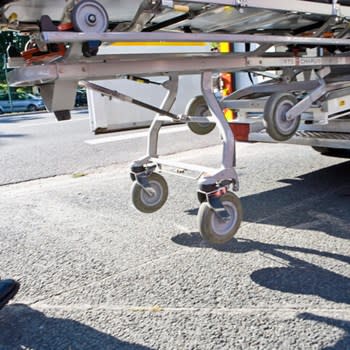COVID's Impact on Child Care for Working Parents and Guardians in Every State
COVID-19 safety concerns upended the child care arrangements for 21% of U.S. adults who have kids under age 5 in the household. In this report, we analyze Census Bureau data to highlight the numbers of parents and guardians affected in each state and the sacrifices they made to provide child care, including leaving a job, cutting work hours or – in some cases – choosing to remain unemployed.

- 21% of people with children under the age of 5 in their household recently had their employment affected by child care needs in the last four weeks because of COVID-19.
- Nearly 1 in 4 parents or guardians whose children were unable to attend daycare or other child care arrangements because of COVID safety concerns cut their work hours or left a job in order to care for their children.
- More than 1 out of 3 of those affected had to use paid or unpaid leave from work to care for a child.
- Nearly 1 in 10 parents and guardians affected reported not looking for a job because of their child care responsibilities.
The COVID-19 pandemic affected the U.S. labor force in myriad ways, many of which are still being felt today. And the virus’ impact on working parents and guardians continues to have a trickle-up effect on the workforce at large.
As of April 2021, 35% of child care centers remained closed, putting scores of workers with young children in a difficult situation with no clear solution.
Data from the most recent U.S. Census Bureau Household Pulse Survey shows that more than 21% of adults with children under the age of 5 in the household have recently had to take one of the following actions in order to care for those children:
- Used paid or unpaid leave
- Cut back on hours
- Left or lost a job
- Did not look for a job, remaining unemployed
- Supervised children while working
Overwhelmingly, most respondents used vacation or sick days, other paid leave or unpaid leave as a consequence of the child care shortage. And in New Hampshire and West Virginia, the majority of affected parents and guardians simply didn’t look for a job, choosing to remain unemployed in order to care for their children.
The map below shows the most common response given by adults in each state who had to adapt their child care arrangements for the period of September 29 to October 11, 2021.
Click on image to enlarge in a new tab
This table details the most common employment consequence for parents or guardians in each state, along with the total number of respondents who gave each answer.
Click on image to enlarge in a new tab
Altogether, more than 7 million of the 32.8 million people surveyed with children in their household under the age of 5 experienced an effect on their employment. More than one-third of those affected used paid or unpaid leave to care for a child at home, and a quarter cut their work hours or left a job voluntarily to do so.
1 out of 6 adults reported having to watch a child while working. And at a time when the U.S. labor market reached the highest number of job openings in history, more than 1.1 million respondents to the survey reported not looking for a job because of their child care responsibilities.
It’s worth noting the data accounts only for a four-week period in September and October of 2021 – well past the worst effects of the pandemic – and only accounts for children ages 5 and under, which doesn’t take into account the many parents or guardians of school-age children who had their employment affected due to remote learning.
Overall, just 3.2% of respondents reported losing a job because of their time spent away to care for a child, accounting for nearly 400,000 parents out of the nearly 33 million surveyed. But that percentage swelled when isolated to certain states. In New Mexico, 21.5% of respondents reported losing a job due to their child care needs.
Click on image to enlarge in a new tab
According to the Department of Labor, there were more than 1 million child care employees in the U.S. in February of 2020. Just two months later, there were little more than 673,000 child care workers still employed.
By August of 2020, more than 70% of parents or guardians reported that their child care program had either closed or was operating at reduced capacity or hours.
As of July 2021, the number of employed child care workers had climbed back up to 925,000 but remained 12% short of pre-pandemic levels.
Click on image to enlarge in a new tab
The COVID-19 pandemic’s effect on the child care industry forced millions of U.S. workers to spend time away from a job, lose or leave a job completely or not look for a job because of child care responsibilities at home.
The data used for this report came from the U.S. Census Bureau’s Household Pulse Survey, specifically Week 39 (September 29 through October 11), the most recent data available.






